What is Neuroprotection? 5 Tips to Help Improve Neuronal Health
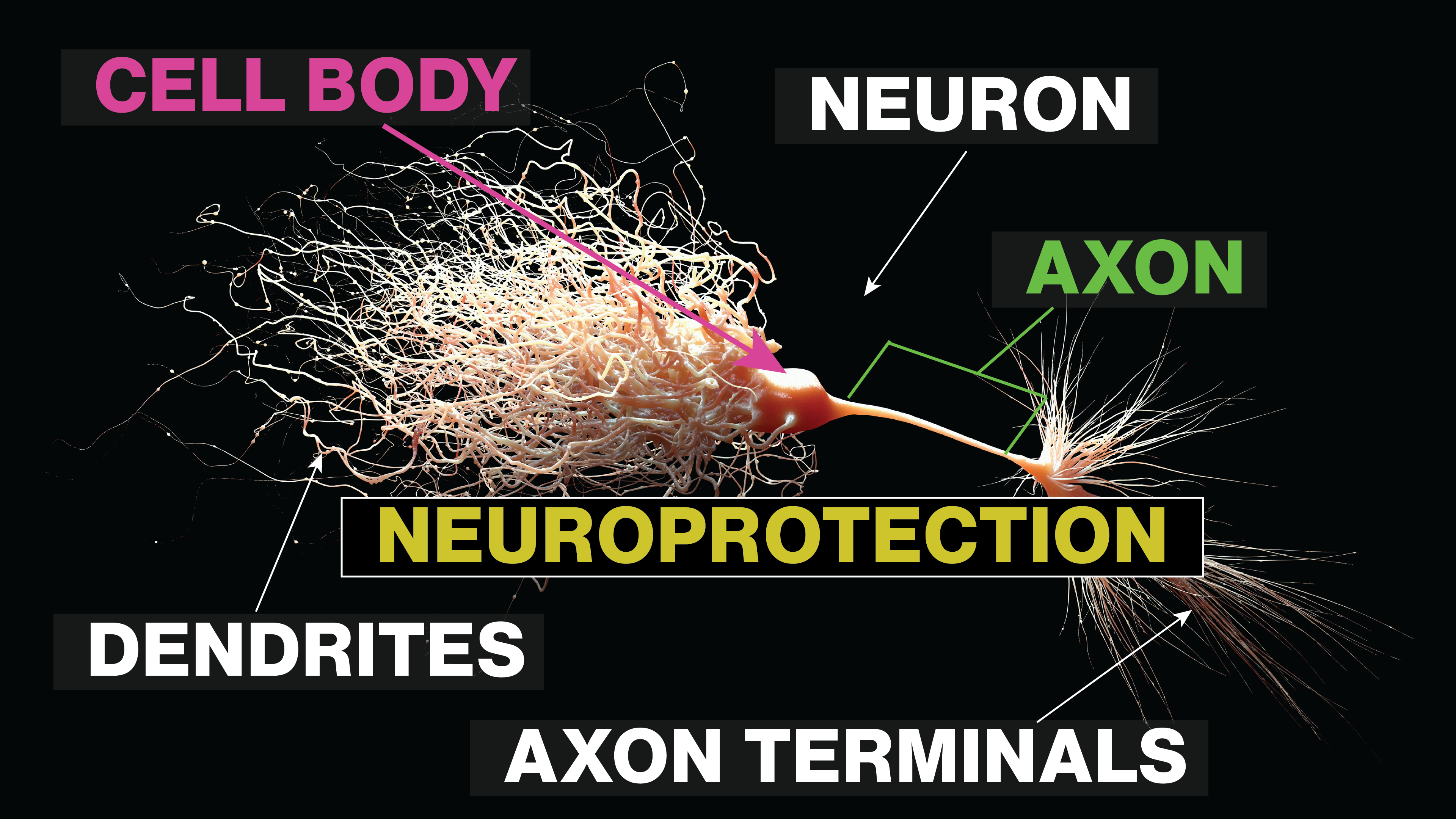
- written by Dr. Kevin Bunting Jr., PharmD (5-10 minute read)
One concept I've learned to appreciate more and more as I age is this idea of the "scarcity effect." This is the idea that things become more valuable and desirable when there is less available. Recently, I've really begun to look inward and appreciating that we are only given one single brain (at least as of 2024...) and subsequently one nervous system during our time here on Earth.
It personally frightens me that there is a chance that my own cognition can decline over time. That being said, being aware of this risk has led me to take measures and develop new habits and daily routines to try and stave off neuronal damage and degeneration.
So, today I wanted to share some methods to help improve your daily routine as well! Let's take a short journey into the concept of neuroprotection.
According to the Merriam-Webster Dictionary
Neuroprotective (adj.): serving to protect neurons from injury or degeneration
To put everything into context, let's first establish a baseline of a neuron under homeostatic conditions (normal and healthy) versus conditions considered dysregulated.
Outline of the sections to follow:
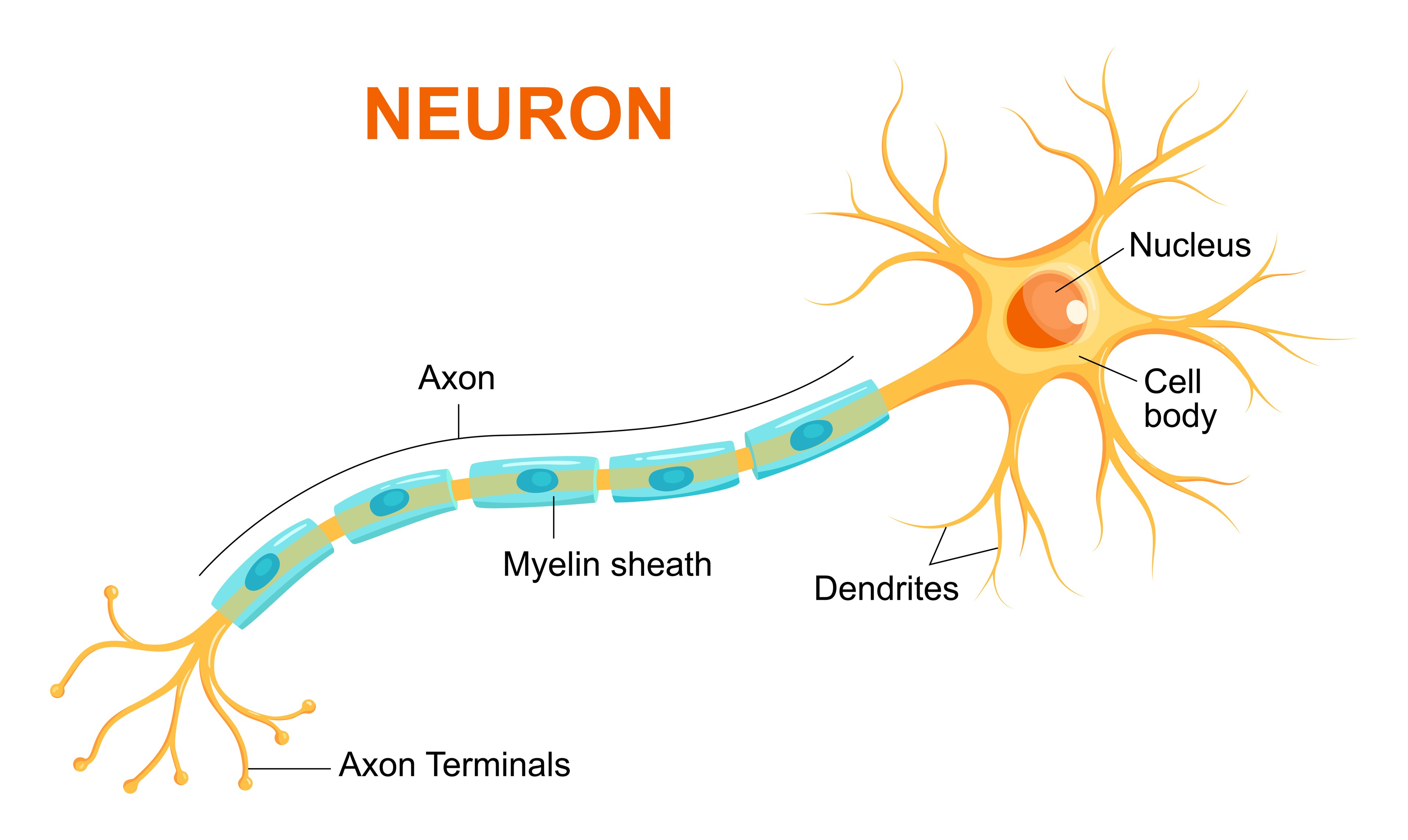
Neuron Overview & Function
We first need to look at the anatomy of a neuron along with its basic functioning to understand which points can fail when dysregulated.
Nucleus: A membrane-enclosed organelle within the cell body of a neuron. This is where the genetic material (DNA) is stored and is responsible for regulating cellular activities, including protein synthesis.
Cell Body (Soma): The main portion of the neuron that houses the nucleus and other cellular organelles. It integrates incoming signals from dendrites. Depending on the type of signal a nerve impulse may or may not be generated.
Dendrites: Branch-like extensions emerging from the cell body. These structures receive signals (both chemical via neurotransmitters and electrical via ion channels) from neighboring neurons or sensory receptors and transmit these signals towards the cell body.
Axon: A long and slender projection from the cell body. This carries nerve impulses away from the cell body and towards other neurons and other end-organs. This can be thought of as the copper inside of a wire carrying the signal.
Myelin Sheath: A fatty, insulating layer that surrounds and protects the axons. This improves the speed and efficiency of the nerve impulse while also providing structural support to the axon. If the axon is the copper inside of a wire, then the myelin sheath is the rubber insulator wrapped around the wire.
Axon Terminal (Synaptic Terminal): The end of the axon. This contains synaptic vesicles filled with neurotransmitters. When an impulse reaches the axon terminal, neurotransmitters are released into the synapse which facilitates communication between neighboring neurons or target cells.
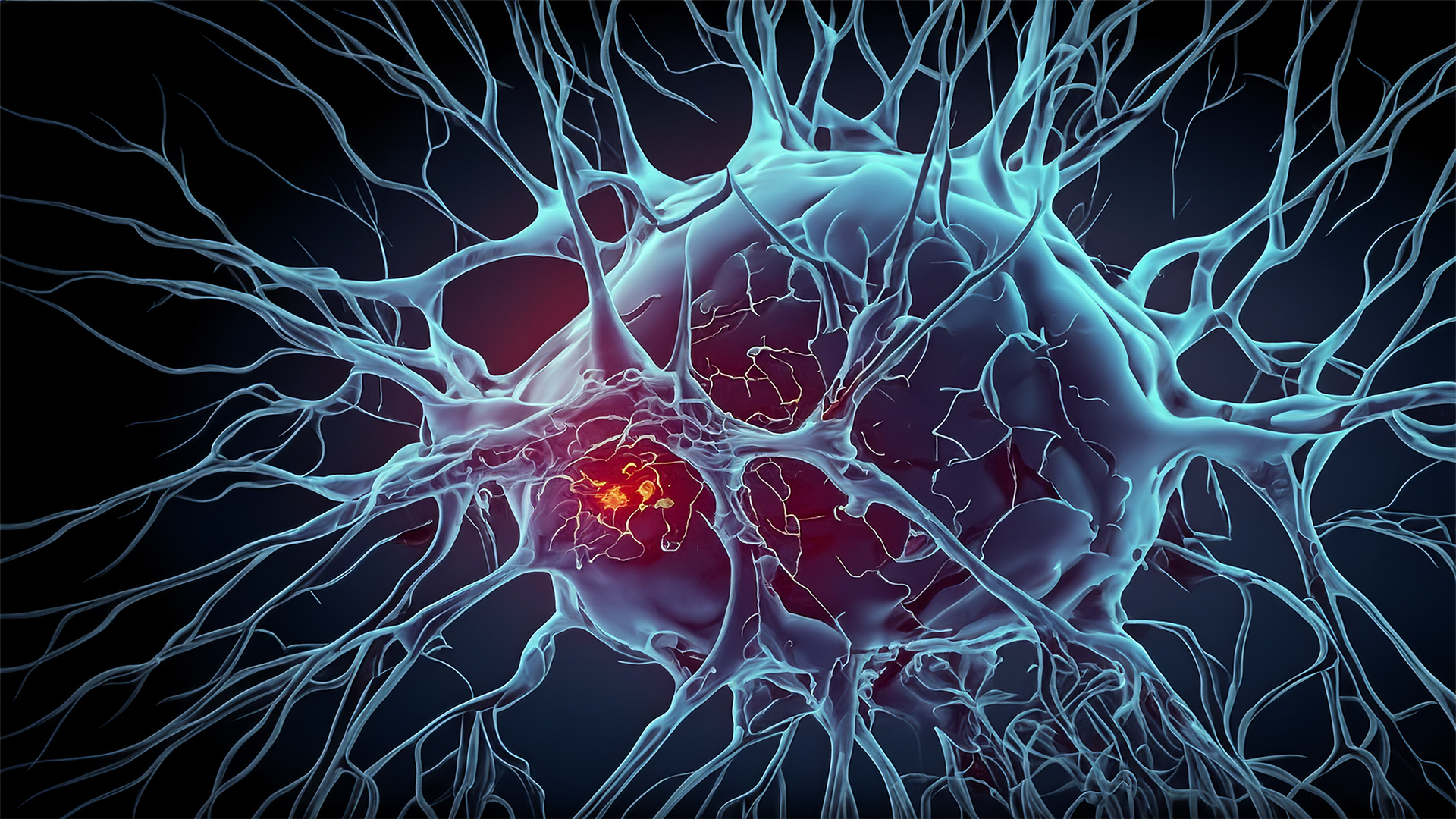
Under homeostatic conditions, nerves fire down a quite consistent pathway. Where can this system fail or become less efficient?
(typically, when we are analyzing any disease state or condition, we need to look at each component and find points vulnerable for degradation)
Neurotransmitter Imbalance: Dysregulation can occur when there is an imbalance in neurotransmitters (our chemical messengers that transmit signals between neurons). Factors such as stress, nutritional deficiencies, and certain pharmaceutical medications can disrupt the balance of neurotransmitters.
Axon Degeneration: Conditions such as neurodegenerative diseases or physical trauma can lead to degeneration of the integrity of the myelin sheath and axons themselves. Less obvious factors to play a role are inflammation and oxidative stress.
Inflammation and Oxidative Stress: Chronic inflammation and chronic stress can negatively effect neuronal health. Chemicals such as cytokines (inflammatory molecules) and reactive oxidative species (ROS) can lead to cellular damage and thus neuronal damage.
Mitochondrial Dysfunction: Since the mitochondria is responsible for providing energy (in the form of adenosine triphosphate (ATP)) to the cell, if there is a dysregulation on this level, it can lead to cellular inefficiencies and furthermore cellular death.
1. Exercise (P.S.A.)
I don't care what ANYONE tells you (including myself)
EXERCISE IS THE MOST IMPORTANT FACTOR DETERMINING NEURONAL LONGEVITY, PERIOD. BEFORE YOU START A NEW DIET, OR NEW SUPPLEMENTS, OR NEW GURU-TESTED BREATHING TECHNIQUES, EXERCISE. NONE OF THESE OTHER FACTORS COME CLOSE TO HELPING YOU AS MUCH AS EXERCISE.
Now that that's out of the way, let's look at why this would be the case. What happens when you DON'T exercise?
Basal (baseline) metabolic rate decreases
Increased fat stores
Increased basal levels of glucose
Increased insulin resistance
Increased levels of inflammatory cytokines and reactive oxidative species
If we go back to the introduction of this post, we can recall that Inflammation and Oxidative Stress are major causes of neuronal damage. Exercise is by far the #1 way to improve your basal metabolic rate, decrease fat and glucose stores, decrease insulin resistance and decrease levels of inflammatory processes SYSTEMICALLY.
Optimize and prioritize this aspect FIRST before you move on to more optimization. It becomes overwhelming to attempt to "do it all at once" if you're just starting out.
How much exercise is good enough to move onto the next step? Organizational experts aka large organizations like the American Heart Association (AHA) recommend different amounts of exercise than Expert Clinicians in the field.
The AHA recommends 150 minutes of moderate intensity activity (a brisk walk) or 75 minutes of vigorous activity per week. I find this to be a bit too generic and not specific enough to optimize.
Field experts have a slightly different view on this. The typical recommendation I personally follow is from Dr. Peter Attia (#s are per week): 60 minutes of stability training, 45-60 minutes of strength training, 45-60 minutes of zone 2 cardio, 30 minutes of aerobic cardio.
My actual #s from a typical week: (total time = 335 minutes avg/wk)
60 minutes of zone 2 cardio x1 session
60 minutes of strength training (push, pull, legs split fashion) x3 sessions
30-45 minutes of high intensity VO2 max cardio x1 session
20 minutes of zone 2 cardio via sauna x5 sessions
Stability & Correctives I do for 5-10 minutes before every session and ending each session (excluding sauna)

2. Diet
I'll keep this one short. Unfortunately, this topic has some of the WORST clinical data / supporting literature around. Many of our perceived views on healthy vs unhealthy diets either (A) comes from studies in rabbits eating cholesterol, or (B) unaccounted for cofounding variables such as: participant ate more vegetables AND stopped smoking... (I am exaggerating a bit, but I think you get the point).
Here's the consensus on it all. Everything in MODERATION. It's estimated that by the year 2030, 50% of the global population will be overweight. This isn't an ideology of one diet versus another, it's a simple calorie in > calorie out problem.
Here are some guidelines though that seem to be generally accepted within the health community:
Protein: 0.8-1 g/lb of body weight per day split into roughly 30ish g aliquots
Fruits / Vegetables: 800g of fibrous fruits / vegetables COMBINED per day
Other than this, for this type of post, we will NOT go into depth. If this is a topic you'd like a deep dive on, let us know and we can do an expansive review!
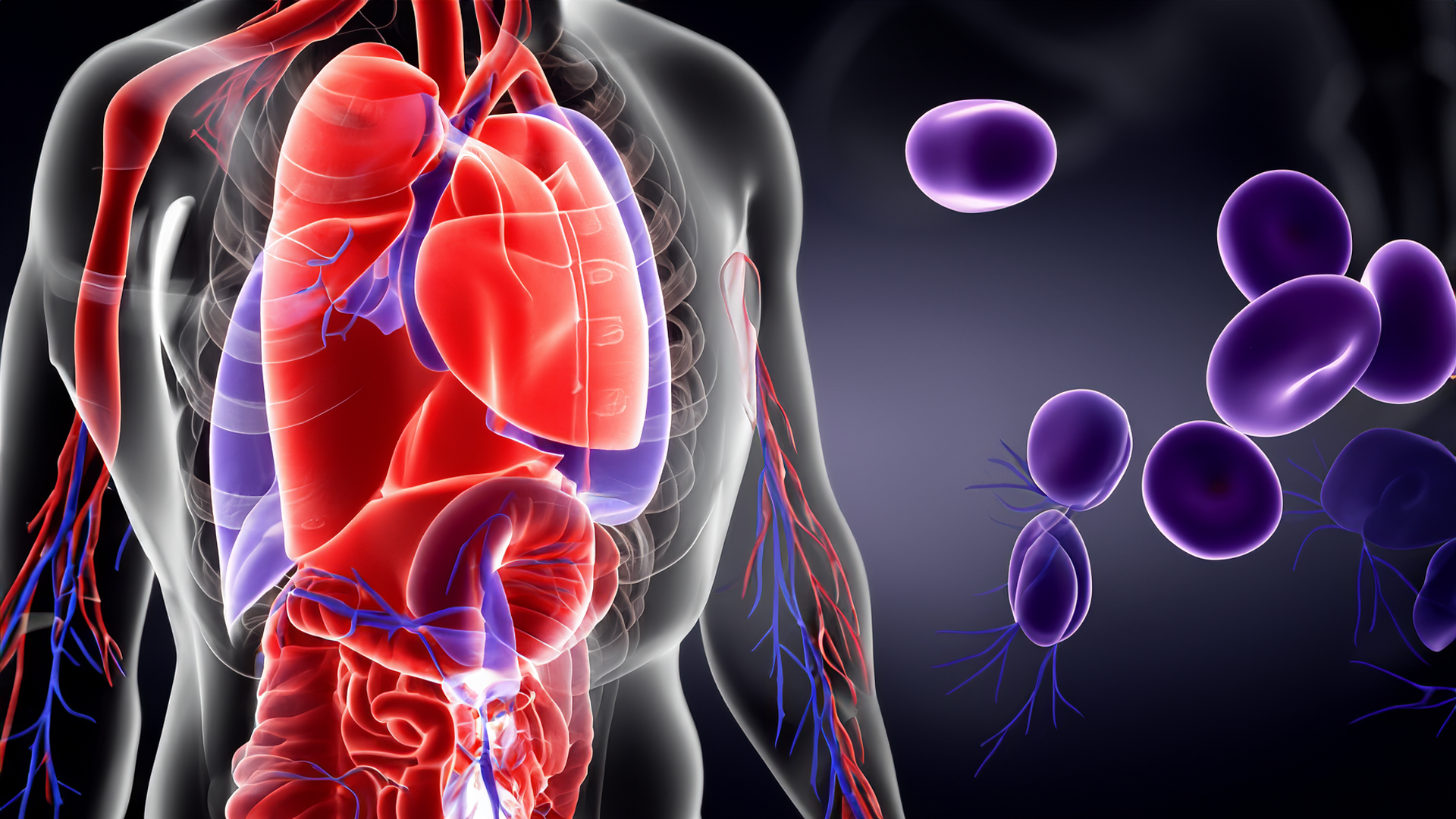
3. Modifiable Risk Factor Example - Smoker vs Non-Smoker
When we are looking at risk factors we have control over (modifiable), the #1 modifiable risk factor to prevent neurodegeneration is the use of tobacco products.
When someone smokes a cigarette, for example, they are doing DIRECT damage to their vasculature. This, in turn causes the release of inflammatory molecules (cytokines) to be released. Over time, this inflammation becomes SYSTEMIC, thus leading to global vascular damage.
Once the body exhibits global inflammation, the arteries, veins and capillaries will begin to sustain the effects of long-term damage - most notably loss of compliance (stretchiness) and narrowing. This then leads to hypertension (increased blood pressure).
Once the micro- and macro-vasculature of the central nervous system undergo these changes, the blood supply lessens and thus nutrient exchange decreases. All of this can lead to neuronal degeneration and dysregulation.
Luckily, the effects of quitting smoking HAVE been studied. "The smoking-associated inflammatory response returned to NORMAL within five years after smokers quit, suggesting that the vascular effects were reversible and that the cardiovascular risk subsides gradually with reduced exposure." Smoking and Inflammation. PLoS Med. 2005;2(6):e198.
4. Sleep Optimization
This is another area where research is being heavily evaluated. We understand that we NEED sleep, and that there are ROUGH estimates on how much sleep to have each evening. What isn't fully understood is the long-term effects on sleep depravation when you begin the periods of sleep depravation at different parts of life.
There is a growing body of literature suggesting that at "midlife" the effects of chronic sleep depravation (< 6hrs per night) are more prevalent than those not at or older than "midlife" (often termed at 40 years old based on average human life-span).
When reading through some of the literature, it became clear to me - why risk the chance? Prioritize a healthy sleep routine (improved sleep hygiene) and stop sacrificing sleep for all other aspects of life. One study was looking at brain volume and cognitive performance for people midlife at various sleep durations: "Both longer (> 9 h/day) and shorter sleep (< 6 h/day) durations were associated with lower brain volumes and cognitive measures (memory, reaction time, fluid intelligence)." Namsrai, T., Ambikairajah, A. & Cherbuin, N. Poorer sleep impairs brain health at midlife. Sci Rep 13, 1874 (2023). - Meaning, there is a sweet spot somewhere between 6 and 9 hours of sleep.
Tips to improve sleep hygiene:
Try not to eat your final meal within 2hrs of sleep
Limit blue light exposure once the sun sets
Use your bedroom for sleep and sex only (remove the TVs, laptops, desks, etc.)
If you cannot sleep, get up and walk around for a bit, then try to go back to sleep again
Try to exercise more than 4-6 hrs before bed (but if not possible, exercise at anytime is better than skipping exercise - I personally used to work out at 10PM every night when I was still working at the hospital)
Make a routine out of it. We respond well to routines and will find ease in sleep if it's part of a ritual
Try using candles at night rather than overhead lights (this can help with the angle of in which the light enters the eye to allow our body to produce melatonin)
5. Cognitive Stimulation
This area is incredibly difficult to quantify with data. Have you ever met that 95 year old that is 100% sharp and on point? And when you start talking with them and notice their daily habits, you'll likely notice a pattern the more interactions you have - regular cognitive stimulation.
This makes sense, right? More and more literature is aiming to address this aspect to neurological health and longevity. What seems to be conclusive though is that (1) community & regular social interaction and (2) regular cognitive stimulation (i.e. learning a topic you're unfamiliar with) are crucial to neuronal health. When you're constantly learning new topics and interacting within a community, new neural networks are either being formed or old neural networks are being strengthened.
It's like the old saying "if you don't use it, you lose it"
My #1 tip on cognitive stimulation - don't be afraid to NOT be the expert. There is nothing wrong with saying "I don't know" or asking questions out of pure curiosity. Dive down the rabbit holes and learn about things that you're interested in. I often use podcasts (Tim Ferriss, Dr. Andrew Huberman, Dr. Peter Attia are my three favorite for Health, Science & Wellness) as one of my forms of media consumption to learn more about topics that get me excited!
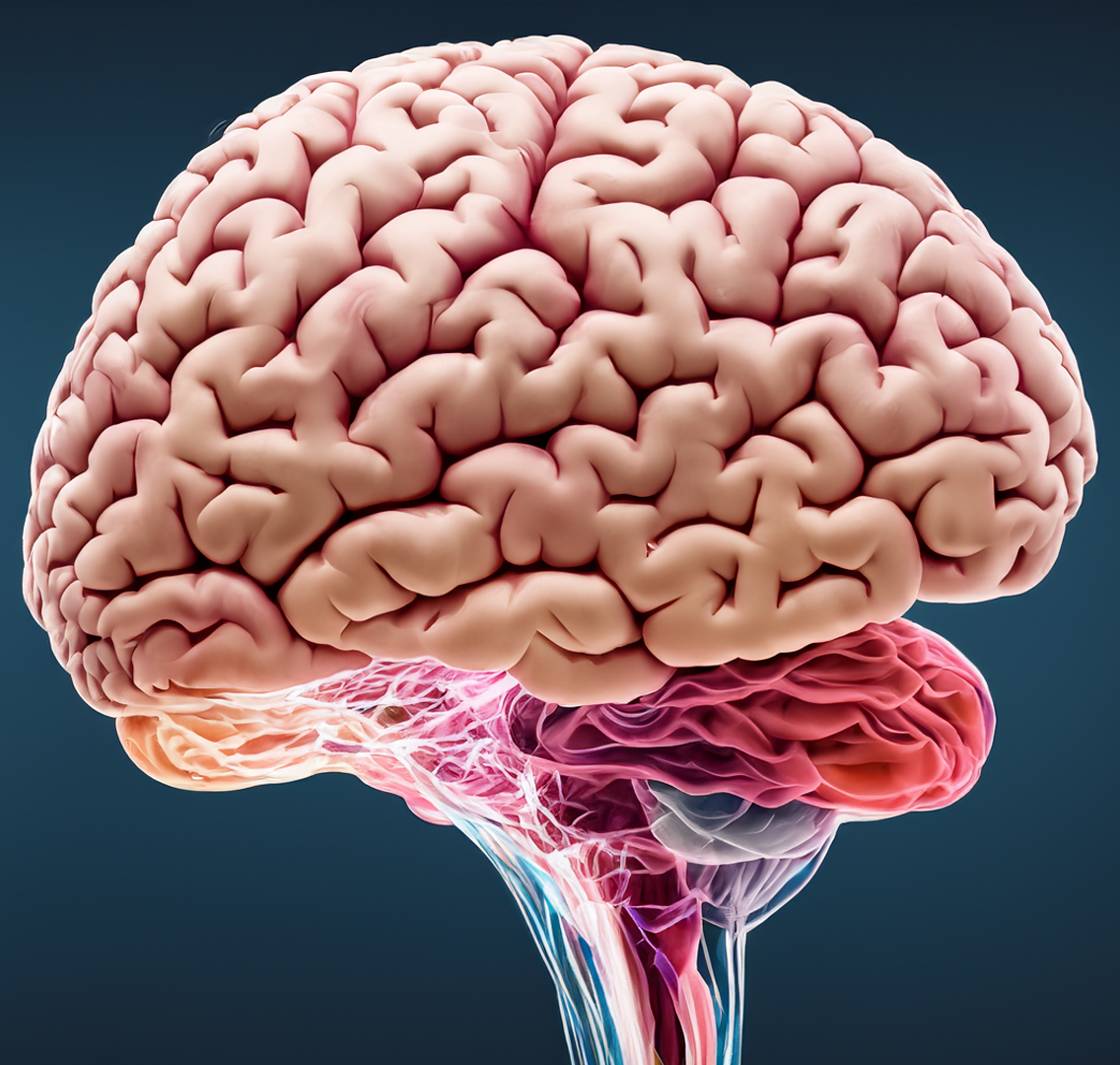
BONUS: 6. Stress Management (Emotional & Cellular)
I wanted to throw in some bonus content here for you! We talk a lot about systemic inflammation and the mechanical process of neuronal damage - but what about the systemic inflammation that can be caused from a non-mechanical source: STRESS.
What I'm really looking at here is CHRONIC stress. If you're in fight-or-flight, this should not have any consequences on your long-term neuronal health. But, what if you're chronically stressed? What happens?
CHRONIC STRESS SIMPLIFIED PATHWAY
-
Stress is CONTINUOUSLY perceived at a LOWER AMPLITUIDE than an ACUTE STRESSOR in the HYPOTHALAMUS
-
A low energy signal then travels down the HPA axis via the following steps:
The hypothalamus sends CORTICOTROPIN RELEASING FACTOR (CRF) to the ANTERIOR PITUITARY
The anterior pituitary then sends ADRENOCORTICOTROPIC HORMONE (ACTH) to the ADRENAL GLANDS
The zona fasciculata then releases the GLUCOCORTICOID called CORTISOL (a.k.a. the “stress hormone”) into systemic circulation
-
Cortisol is responsible for releasing GLUCOSE into systemic circulation
-
Higher levels of basal (baseline) glucose in the circulation leads to INSULIN RESISTANCE, GLUCOSE INTOLERANCE, DYSLIPIDEMIA, VISCERAL ADIPOSITY, and HYPERTENSION
-
All of these deviations from homeostasis lead to SYSTEMIC INFLAMMATION
-
Systemic inflammation leads to an increased concentration of REACTIVE OXIDATIVE SPECIES (ROS)
ROS can cause direct damage to DNA, neurons, cells, and proteins
When I was developing NESIS INCEPTION, I was studying this pathway nonstop. I wanted to target multiple steps in this pathway AT THEIR ROOT to try and address these causes of inflammation. For example:
Ashwagandha has been shown to increase Neuropeptide Y (NPY) which then increases Heat Shock Protein 70 (HSP70) to help blunt this pathway and decrease stress*
Rosemary, Lemon Balm, & Sage help suppress cytokine producing cells*
L-Theanine helps decrease overactive neuronal firing*
Phosphatidylserine is a component of our phospholipid bilayer, thus improving myelin integrity*
And that's only looking at 6 of our 10 clinically-dosed ingredients. The other 4 dive deeper into the ACUTE phase of stress and focus.
Once you've optimized and focused on some of the more immediate components to this topic (exercise, sleep, diet, etc.) perhaps you can consider supplementation to fully unlock the rest of that potential. Learn more about NESIS INCEPTION here
And there you have it!
A quick overview of Neuroprotection! Although this was quite lengthy, I only scratched the surface.
Thank you for taking the time to read and learn with me!
Feel free to email us at support@nesislabs.com or reach out to us on Facebook or Instagram @nesislabs with any comments or questions! I personally respond to all inquiries!
Interested in a one-on-one consultation? Book and schedule a private one-on-one with me, today!
*THESE STATEMENTS HAVE NOT BEEN EVALUATED BY THE FOOD AND DRUG ADMINISTRATION. THIS PRODUCT IS NOT INTENDED TO DIAGNOSE, TREAT, CURE OR PREVENT ANY DISEASE.



